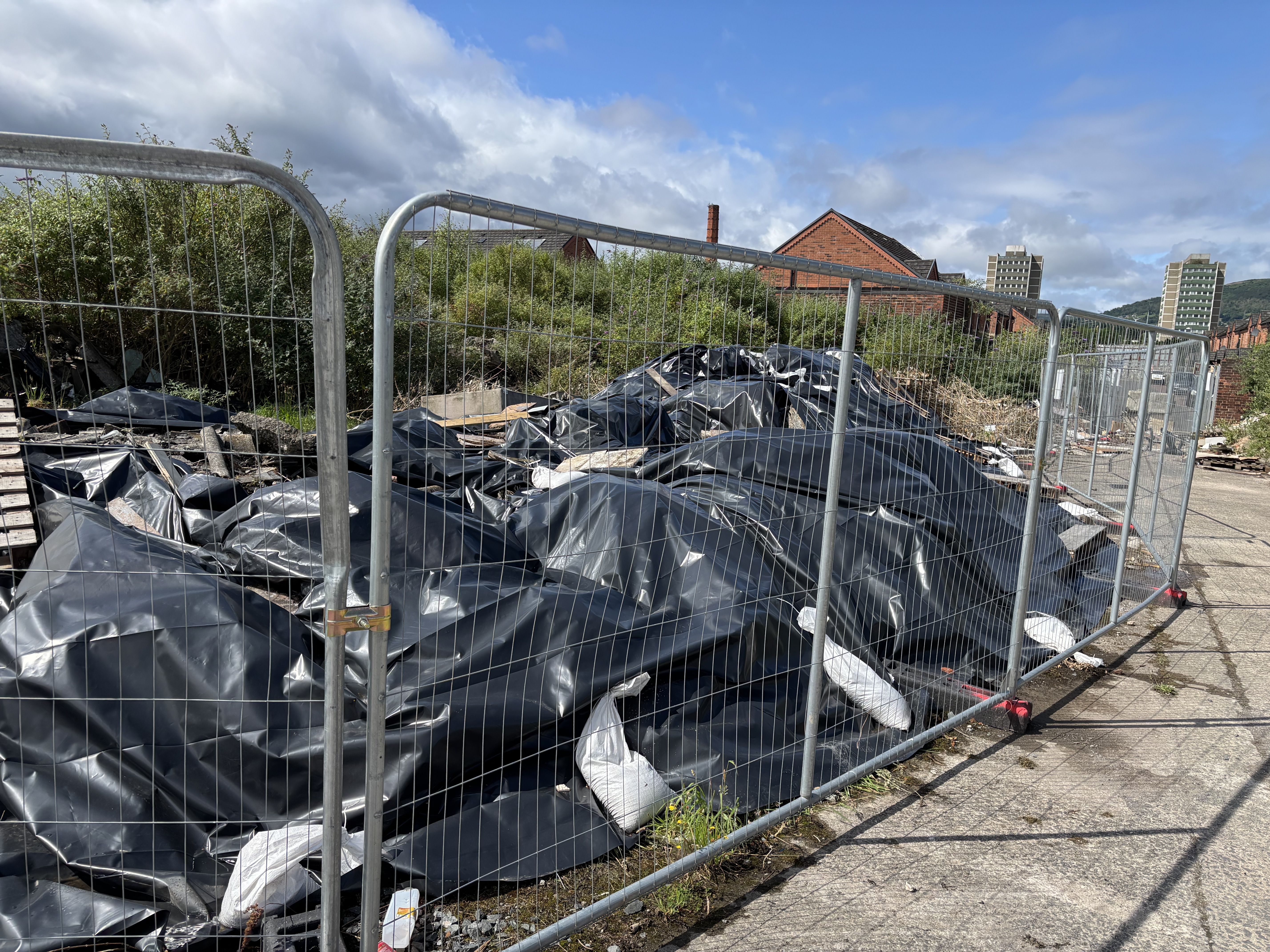With just days to go before the traditional Eleventh Night bonfires across Northern Ireland, two statutory agencies are playing pass the parcel over the removal of dangerous asbestos next to one bonfire site in Belfast.
The former Weavers factory site sits next to the motorway separating South and West Belfast. As cars pass by drivers can see the growing bonfire structure take shape.
The bonfires are traditionally built as part of the Twelfth of July Orange Order celebrations to mark the victory of King William of Orange over King James II at the Battle of the Boyne in 1690.
However, just yards away from the bonfire a huge pile of asbestos lies behind a six-feet high portable fence. On top of the illegally dumped material is a black plastic sheet held down by bits of wood and sandbags.
The Northern Ireland Environment Agency has said that the cost of moving the asbestos was in the region of £100,000. Yet, on Friday night of this week, hundreds of young people will gather on the waste ground next to the lethal material to watch the bonfire being lit.
In a statement the NIEA said: "We received a complaint concerning potentially hazardous waste at a site in the vicinity of Meridi Street, Belfast on the afternoon of Friday 16th May.
"Staff from the Environmental Crime Unit within NIEA were in contact with Belfast City Council about the matter on Monday 19th May and enquiries are ongoing."
Meanwhile, a Belfast City Council spokesperson this week said: “Belfast City Council continues to engage with the landowner and NIEA in relation to this site.”
"A local builder we spoke to, who has experience of working with and disposing of hazardous materials, examined our pictures and said the asbestos remains a danger to anyone in its vicinity.
"There’s nothing effective enough either to keep kids from getting in there, to stop the elements doing their bit, or to stop burning debris from landing on the plastic.
"Asbestos is dangerous, but when it's burned it becomes much more dangerous. And there’s gaps everywhere in the sheeting – a strong wind would easily blow it off.”







